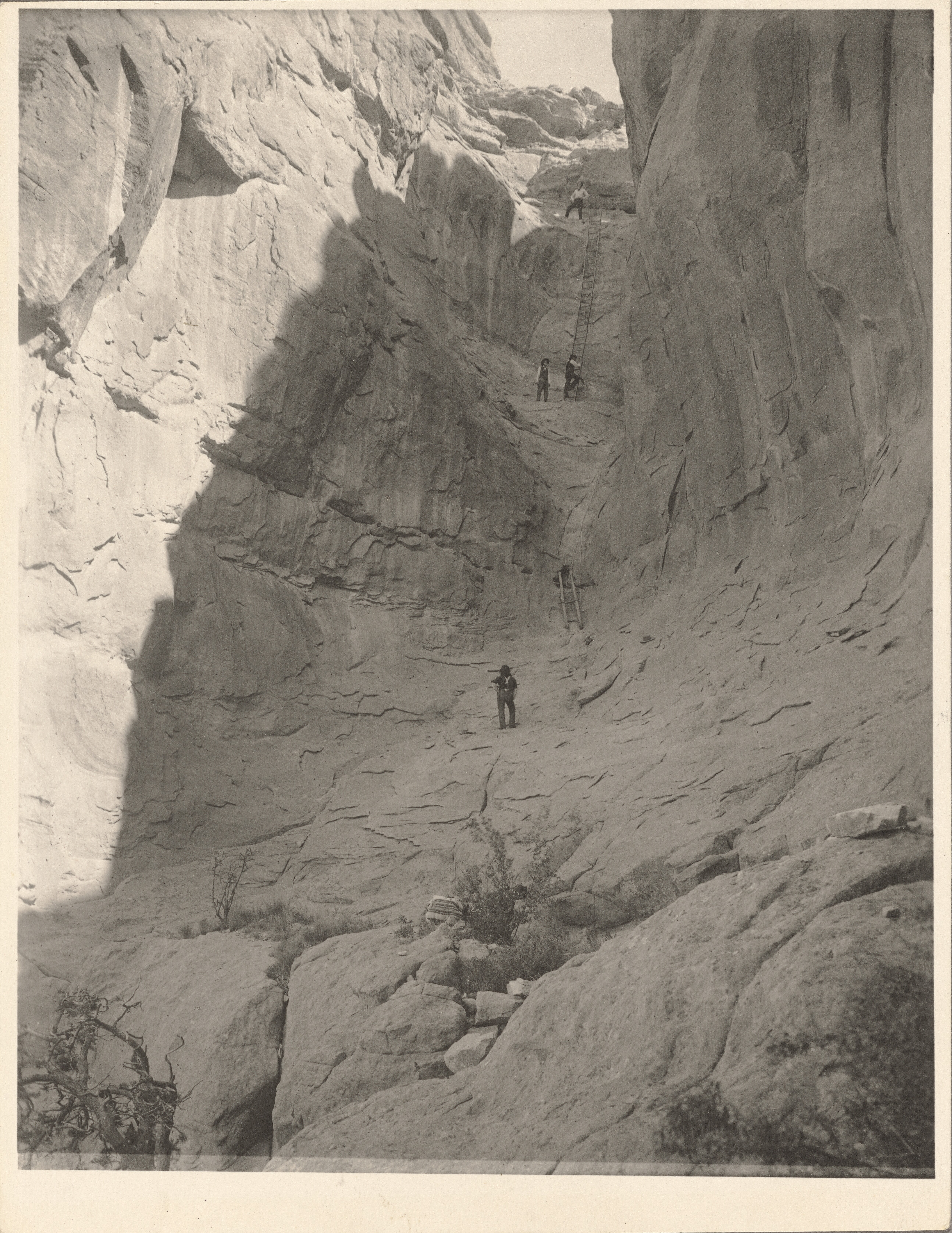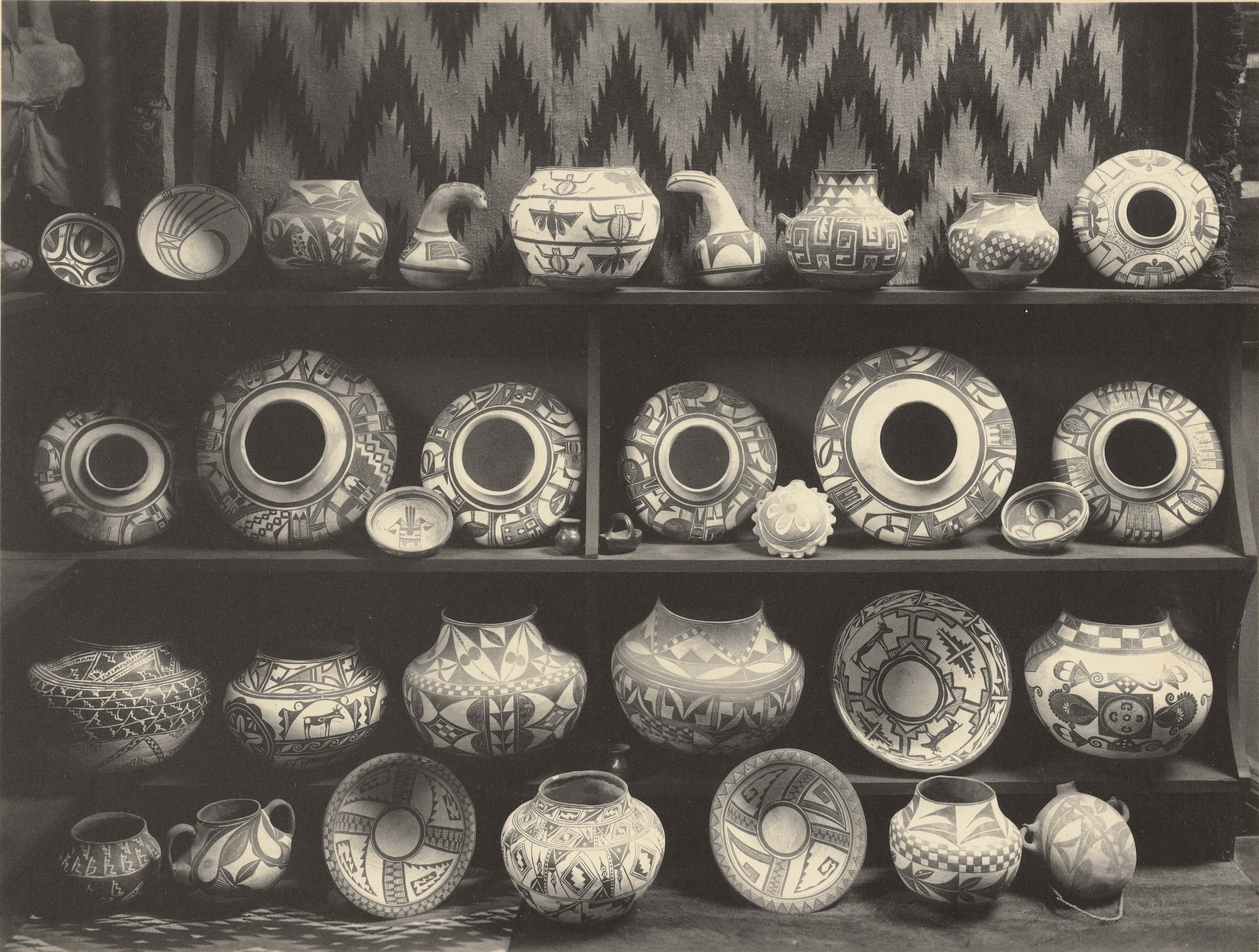
Originally from Illinois, Vroman worked for the Chicago, Burlington and Quincy Railroad Company for sixteen years before moving to California in 1893. Upon opening a store that sold books, stationery, and photographic supplies in Pasadena—which remains in operation as “Vroman’s Bookstore” today—he began to pursue his interest in photography. From 1895–1905, Vroman travelled throughout Southern California and made eight trips to Arizona, Colorado, New Mexico, and Utah, where he photographed local Indian communities. His extensive travels and repeated collaborations with the Bureau of American Ethnology, a research unit of the Smithsonian Institution, led to a significant body of work that continues to undergo critical reassessment.
In his photographic work, Vroman concentrated on the daily lives, customs, and ceremonial activities of the Hopi, Zuni, and Navajo peoples. A member of the Pasadena Camera Club, he often travelled with other photographers involved in its activities, such as his friend, Los Angeles Times editor Charles Fletcher Lummis. In 1897, Vroman was employed by the Bureau of American Ethnology to photograph Katzimo (“Enchanted Mesa”) in central New Mexico (see 2016.131) (fig. 1). His sweeping views from its summit were used as evidence of the prior Native American habitation of the area and were later published in Benjamin Brooks’s book The Enchanted Mesa (New York: Charles Scribner’s Sons, 1904).
In 1899, Vroman again accompanied the Bureau of American Ethnology to the Southwest, this time on a survey to document the pueblos and cliff dwellings of New Mexico. Several of the photographs he made were included in the Smithsonian’s multivolume Handbook of American Indians North of Mexico (Washington: Government Printing Office, 1907), an encyclopaedic classification of over 2,500 cultural and linguistic groups. In 1901, Vroman served as the official photographer on the Museum-Gates Expedition, an archaeological survey of the Southwest led by ethnologist Walter Hough. He amassed a collection of Native American artifacts (see 84.XM.472.14) (fig. 2) during his trips, though the provenance and circumstances surrounding his acquisition of these objects remains unknown.

Alongside his work on Native American communities, Vroman documented Spanish missions in California over a ten-year period (1895–1905), often with friends and photo enthusiasts who constituted the “Club of Four,” a group he founded. In addition to Vroman, the group comprised Homer Eachus Hoopes, H.C. Chatfield, and G.J. Kuhrts. A collector of netsuke (miniature Japanese carved objects), Vroman toured and photographed in Japan in 1903 and 1909. He also made photographs in France and Germany (1912), Canada (1914), and on the East Coast of the United States (1914).
Vroman’s images of Native American peoples have long been regarded as respectful portrayals, in part because he purportedly gifted prints to numerous people he depicted. More recently, however, re-evaluation of his work has revealed a more complicated history, situating his aesthetic choices within the scientific aspirations of the Bureau of American Ethnology, a prominent institutional exponent of social evolutionary theory. The commodification of his subjects has also come under scrutiny: conscious of the widespread interest in Native American cultures at the turn of the twentieth century, Vroman sold his portraits for use in a popular deck of playing cards (“The American Indian Souvenir Playing Cards,” 1900), and his photographs of Hopi women were widely circulated as postcards by the Detroit Photographic Company.
- Antares Wells, J. Paul Getty Museum, Department of Photographs
Selected further reading:
Shannon, Heather A. Primitive Camera: Adam Clark Vroman and the Status of Photography in Late-Nineteenth-Century America. PhD thesis, Rutgers, The State University of New Jersey, 2017.
Weems, Jason. “Playing the Indian Card.” Exhibition essay for Myth and Majesty: Photographs Picturing the American Southwest, The California Museum of Photography, January 30–May 21, 2016.
Header Images (counterclockwise from top):
Adam Clark “A.C.” Vroman (American, 1856–1916), Oraibi Woman at Window, 1902. Platinum print, 14.9 × 10 cm (5 7/8 × 3 15/16 in.). Los Angeles, J. Paul Getty Museum, 84.XM.472.5
Adam Clark “A.C.” Vroman (American, 1856–1916), [The Plaza at Shungopavy], about 1902. Platinum print, 15.5 × 20.6 cm (6 1/8 × 8 1/8 in.). Los Angeles, J. Paul Getty Museum, 84.XM.472.22
Adam Clark “A.C.” Vroman (American, 1856–1916), “On the road to Acoma” (Window Rock), 1900. Platinum print, 15.7 × 20.9 cm (6 3/16 × 8 1/4 in.). Los Angeles, J. Paul Getty Museum, 84.XM.472.25